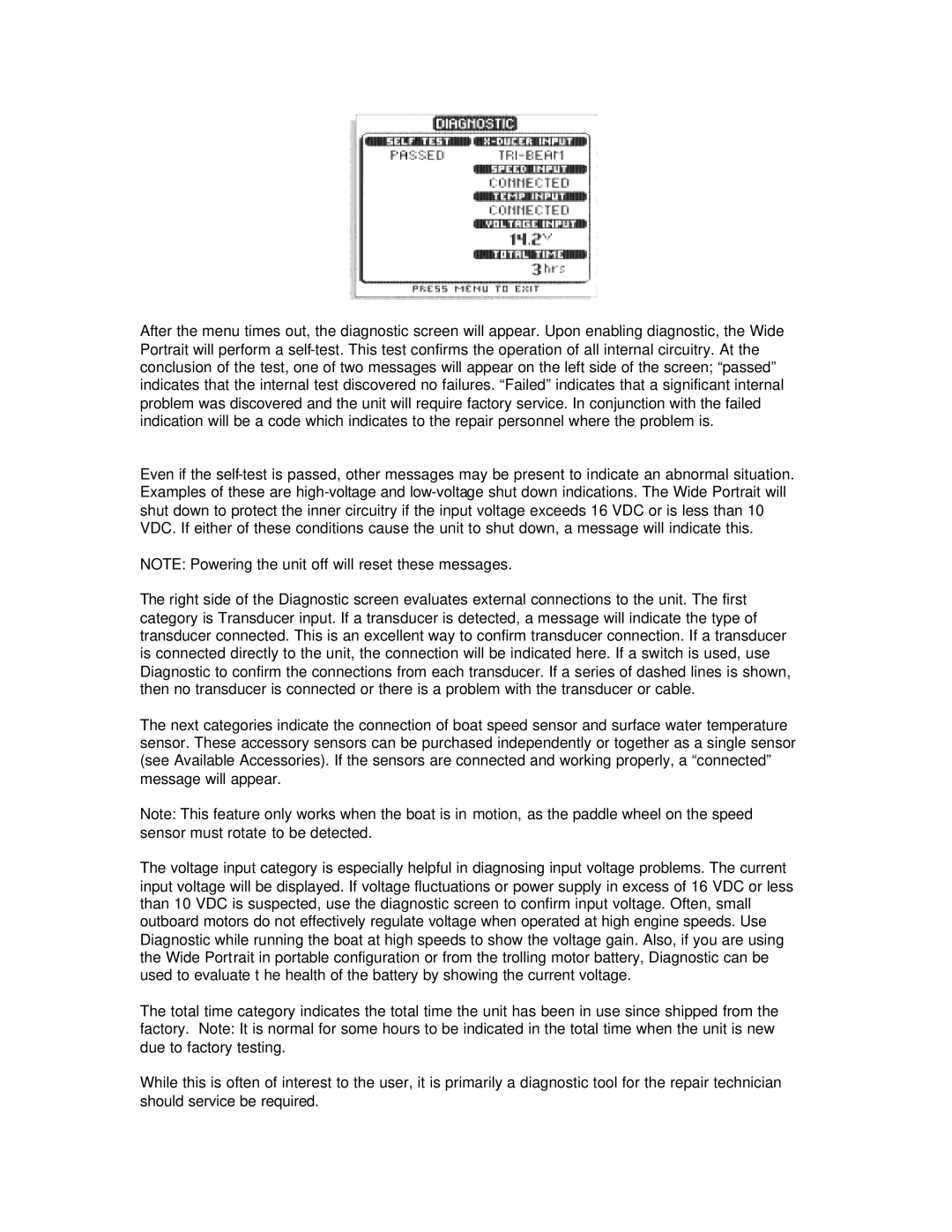Wide Portrait specifications
The Humminbird Wide Portrait stands out in the realm of fish finders and chart plotters, designed with both professional anglers and casual fishermen in mind. Its innovative features and cutting-edge technologies make it a staple for anyone serious about their time on the water.One of the defining characteristics of the Humminbird Wide Portrait is its expansive display. With a large screen that is oriented in portrait mode, users benefit from increased vertical viewing space, which enhances visibility of underwater structures, fish, and waypoints. The display employs high-resolution color graphics, ensuring clarity even in bright sunlight. The intuitive interface allows for easy navigation through menus, making it accessible for users of all skill levels.
At the heart of the Humminbird Wide Portrait is its advanced sonar technology. With features like DualBeam Plus sonar and SwitchFire, users can explore underwater environments with precision. DualBeam Plus employs two sonar beams, allowing for detailed imaging at varying depths and providing a more comprehensive view of the underwater landscape. SwitchFire technology enhances this experience by enabling users to toggle between different display modes, tailoring the view to their specific needs.
Notably, the Humminbird Wide Portrait integrates GPS capabilities, offering built-in cartography and the ability to create customized maps. This feature proves invaluable for planning fishing trips, as users can mark hotspots, track their movements, and quickly return to favorite locations. The unit also supports the Humminbird LakeMaster and Navionics mapping options, further expanding its navigational capabilities.
User-friendly features like the ability to set up split-screen views enhance the functionality of the Humminbird Wide Portrait. Anglers can simultaneously monitor sonar readings alongside GPS data, providing a comprehensive picture of both location and fish activity. Additionally, the device's rugged design ensures it can withstand the harsh conditions often encountered while fishing.
In conclusion, the Humminbird Wide Portrait is a game-changer for anglers who value technology and functionality in a compact package. With its advanced sonar capabilities, expansive display, integrated GPS, and user-friendly features, it remains an essential tool for maximizing time on the water and enhancing the fishing experience. Whether you're a seasoned pro or just starting, the Humminbird Wide Portrait empowers you to fish smarter and with greater confidence.

